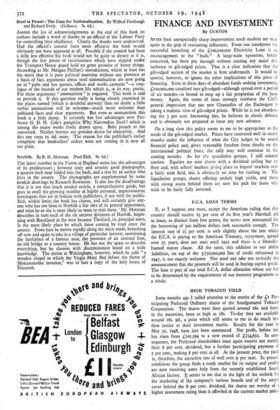Norfolk. By R. H. Mottram. (Paul Elek. 9s. 6d.) THE
latest number in the Vision of England series has the advantages of its predecessors ; between sixty and seventy good photographs, a quarter-inch map folded into the back, and a text by an author who lives in the county. The photographs are supplemented by some modish drawings by Kenneth Rowntree. It also has the disadvantage that it is not that much needed article, a comprehensive guide, but goes to swell the growing number of highly personal, impressionistic travelogues that are in fashion with publishers, if not with the public. Still, within limits the book has charm, and will certainly give any- one who has not been to Norfolk a fair idea of its general appearance, and what he or she is most likely to want to visit there. Mr. Mottram describes in turn each of the six ancient divisions of Norfolk, begin- ning with Brecldand in the west because Thetford, its principal town, Is the most likely place by which those coming by road enter the county. From here he moves rapidly along the main roads, branching off now and again to take in a village of particular interest, mentioning the birthplace of a famous man, the presence of an unusual font, an old bridge or a country house. He has not the space to describe everything, but he chooses with' discrimination based on a wide knowledge. The shrine at Walsingham, however, which he calls "a wooden chapel to which the Virgin Mary fled before the threat of Mohammedan invasion," was in fact a copy of the holy house of Nazareth.


































 Previous page
Previous page